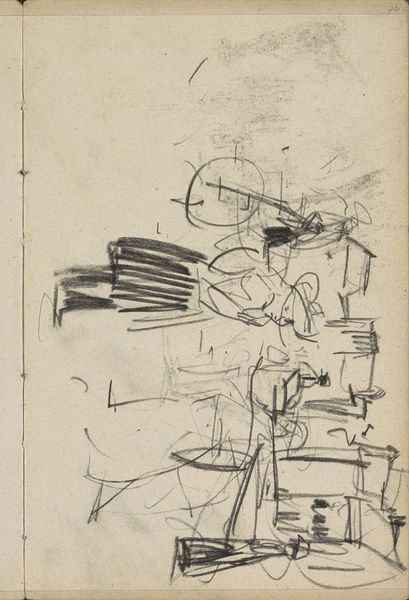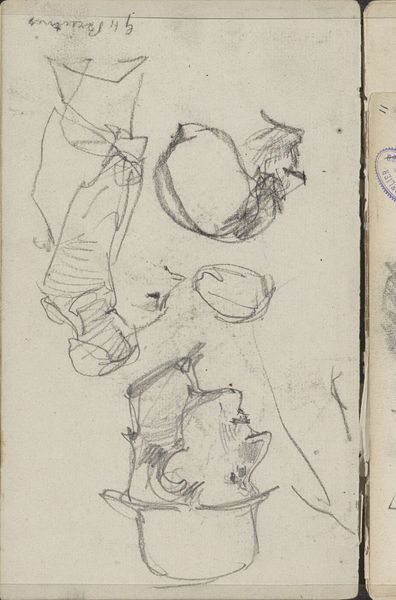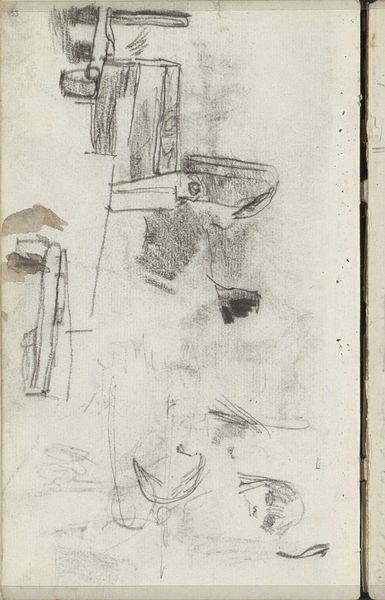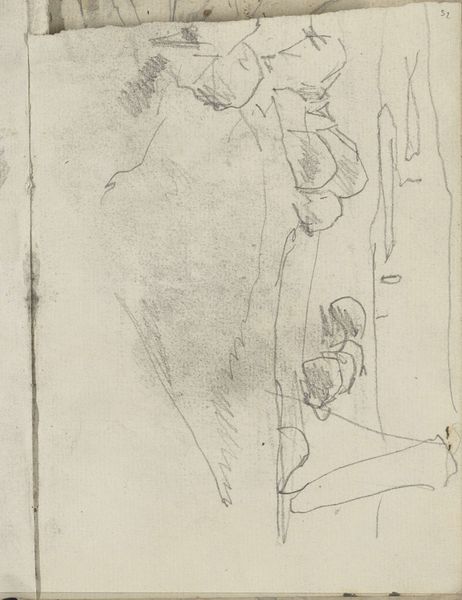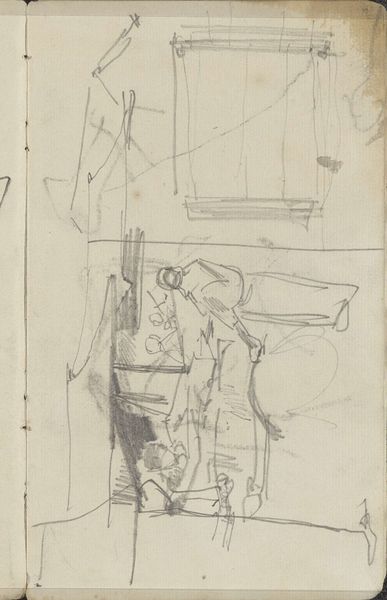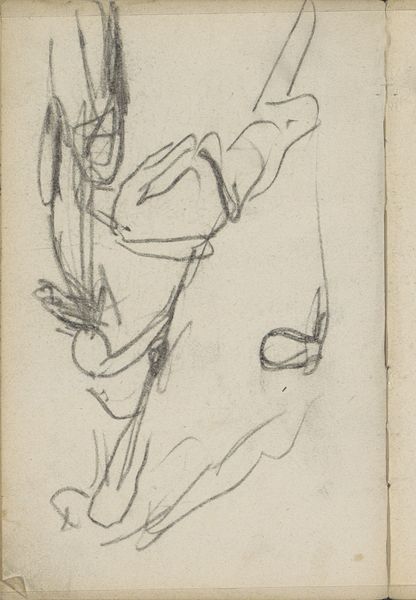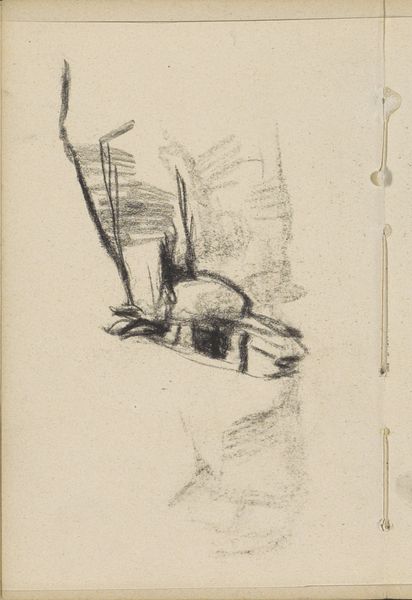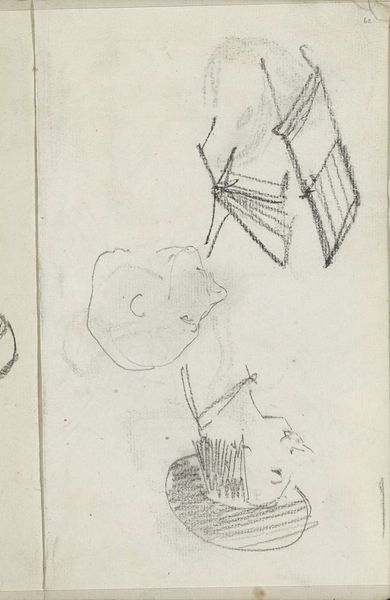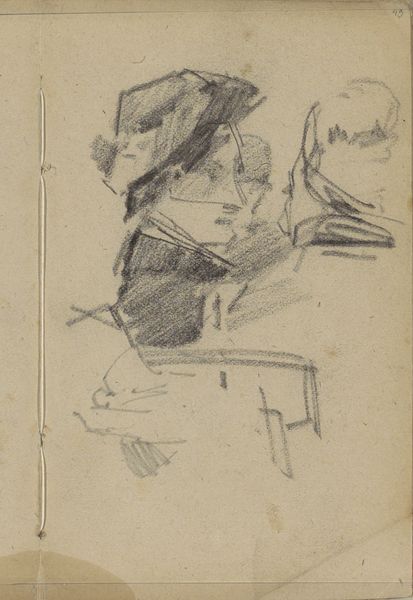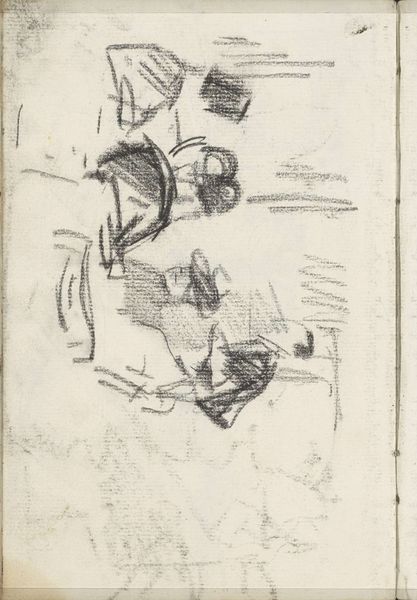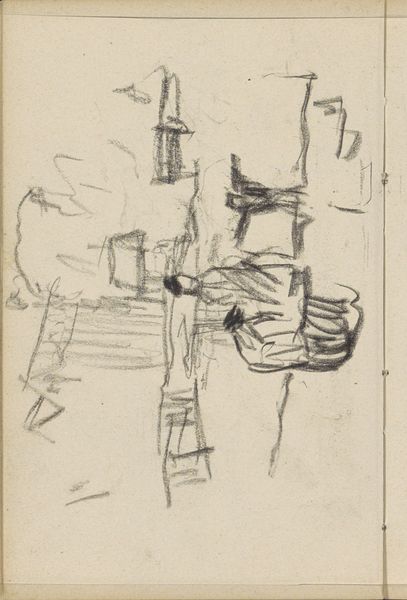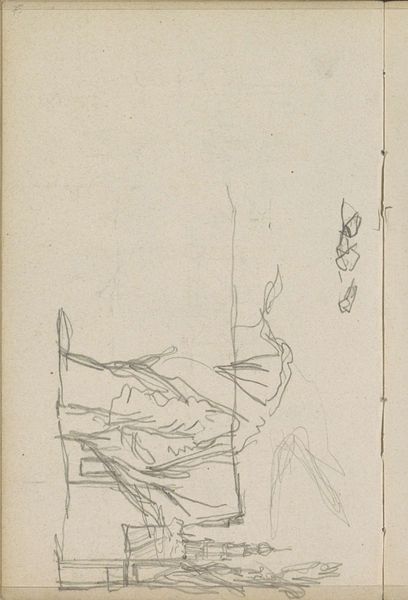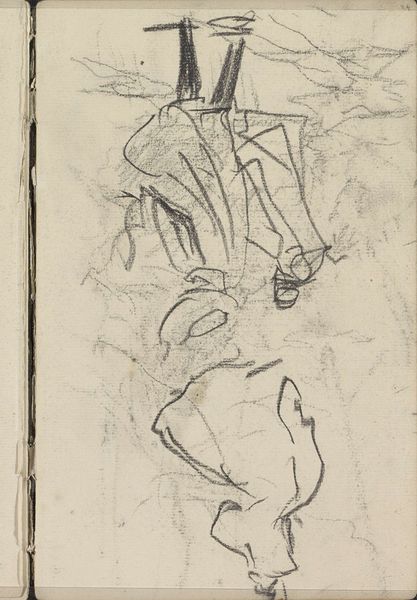
Studieblad met een paardenhoofd, een figuur en een kar c. 1892 - 1923
0:00
0:00
Copyright: Rijks Museum: Open Domain
Curator: What a seemingly unassuming graphite sketch by George Hendrik Breitner, titled "Studieblad met een paardenhoofd, een figuur en een kar," dating from around 1892 to 1923. It resides here at the Rijksmuseum, a modest but telling piece. Editor: Mmm, the mood strikes me first. Stark, unfinished, raw. The pencil strokes are so immediate, it's like catching a glimpse of the artist's thought process as he teases out forms from the void. It’s pure, distilled observation. Curator: Exactly. Breitner was deeply immersed in the urban environment, particularly Amsterdam. These sketches reflect a working method, an almost journalistic capturing of street life—in contrast to some of his more formally composed works. Notice how he groups the studies of horses, figures and a cart. This offers a view of artistic intention, revealing not only the what, but also the why of his creative production. Editor: A horse's head and cart—symbols of labor, transport, and maybe even a veiled reference to social stratification. I find it fascinating how with just a few lines he conveys a sense of weight and motion. There is an undeniable realism embedded within the suggestive marks. Curator: Absolutely. The "how" here is important too: the medium is graphite, an inexpensive and readily accessible material, speaks volumes about the accessibility of art making and artistic exploration in this period. And pencil sketches became central to the Impressionist and Post-impressionist art movement. It offered accessibility for a new generation of artists to express daily life and their individual perception. Editor: I love seeing those ghost-like remains of other thoughts he had on the same page—he made mistakes and didn't cover them. It creates this incredible intimacy, like looking through someone's private journal. There is something wonderfully revealing about sketches—the underbelly of creation, unfiltered by expectations. Curator: True. This sketchbook page is not just a record of observation, it represents the social reality of late 19th-century Amsterdam. A study into artistic production that became increasingly engaged with urban life. It provides insight into how societal conditions are observed, filtered and ultimately materialized through the lens of an artist. Editor: Well, I’m left feeling grateful for this little window into Breitner's mind. There’s a restless energy in those lines that keeps you looking, thinking... wondering about the stories these fragments hold. Curator: Precisely. It's a study in multiple senses of the word, not just of form but of history and process.
Comments
No comments
Be the first to comment and join the conversation on the ultimate creative platform.
